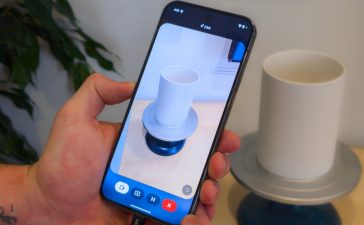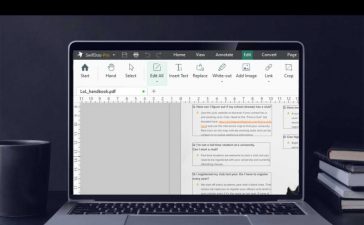Typically, the next iOS minor release goes into beta within a day or two of the prior version’s main public release. So, when iOS 16.3 was released back on January 23, we expected the 16.4 beta to begin on January 24. It’s unusual, but iOS 16.4’s first beta release finally arrived on February 16, over three weeks later. Its contemporaries (iPadOS 16.4, watchOS 9.4, and macOS 13.3) also entered beta at the same time. We expect a final release of iOS 16.4 will likely come in March, possibly at Apple’s spring event.
Update 3/08/23: The public beta of iOS 16.4 has been released.
iOS 16.4: New features
Here are some of the significant changes and additions in iOS 16.4. We will continue to update this section as more changes are discovered.
Apple ID for beta access: Apple is cracking down on loading beta versions through third-party sites and profiles, requiring verification of an Apple ID enrolled in either the public or developer beta program. With iOS 16.4, you’ll be able to designate an Apple ID with beta access that is separate from the one used for the rest of the device’s features.
New emoji: This release adds the emoji that are part of the Unicode 15.0 standard. They include a shaking face (side to side, like “no”), several heart colors including a pink heart that was strangely absent until now, left and right pushing hands, several new animals (moose, goose, jellyfish), and a few food items and musical instruments.
Web push notifications: This release adds support for web push notifications. Web apps saved to the home screen can send system notifications through the Push API, Notifications API, and Service Workers by using the standard HTML5 Web Push API. Websites have to ask for permission just as apps do, and it has to be in response to a user action (like tapping a “subscribe” button or the like).
Home architecture upgrade: The Home architecture upgrade that was pulled from the iOS 16.2 release is back in iOS 16.4. This is separate from the upgraded Home app, which has remained.
New Podcasts app: A new Podcasts app across iPhone, iPad, and CarPlay improves the Up Next queue and adds features like episode filtering and the ability to browse by season.
5G: Standalone support for T-Mobile users to enable faster speeds where available.
Widgets: A new Wallet widget to easily track orders.
Books page turning animation: The page turning animation, where the corner of the page folds up, is back in Apple Books after being removed in iOS 16.
Mastadon support: Automatic previews for links in Messages as with Twitter.
New beta requirements: If your device is registered as a beta tester, you can open Settings > General > Software Updates and a new menu allows you to select whether you want no beta updates, Developer Beta updates (if applicable), or Public Beta updates. Also, developers will now need an authorized developer account to install updates rather than just a profile.
If you want to learn more about iOS 16 read about the new features (and problems) that have arrived in iOS 16 since it launched.
iOS 16.4: Release date
We don’t expect iOS 16.4 to release until at least late February, or possibly March. Apple is rumored to be holding a spring event that could coincide with the release of the full version of the update.
iOS 16.4: How to install the public beta
Apple released the public beta for iOS 16.4 on Friday, February 17. Here’s how to get it on your iPhone:
- Click Sign Up on the Apple Beta page and register with your Apple ID.
- Log in to the Beta Software Program.
- Click Enroll your iOS device. (If you signed up for a previous version’s beta last year you may need to uninstall the profile for that and then re-enroll for the new one.)
- Go to beta.apple.com/profile on your iOS device.
- Download and install the configuration profile.
- You may need to jump over to Settings to enable the profile. Go to General > VPN and Device Management and tap on the iOS 16 beta profile there.
- That will make the beta version available in the Settings app, under General > Software Update.
iOS 16.4: How to install the developer beta
Each stage of iOS 16.4’s development cycle will be rolled out to developers first, and then to public beta testers afterward (typically within a day or so). If you’re a developer and need to test your apps against the most up-to-date version of the OS possible, this is the version to run. With iOS 16.4, Apple is requiring all testers to register with the Apple Developer Program for $99 a year.
- In Safari on your iPhone or iPad, go to developer.apple.com and log in using your Apple ID.
- Go to the Downloads section (you’ll find it in the lefthand menu), scroll down to iOS 16 or iPadOS 16 beta and tap Install Profile, then Accept.
- Open the Settings app. You should see Profile Downloaded at the top of the main screen—tap this. If you can’t see it, go to General > VPN and Device Management and tap on the iOS 16 or iPadOS 16 beta profile there.
- Tap Install in the top-right to install the iOS or iPadOS 16 beta profile.
- Read the developer consent form and (assuming you’re happy with the terms) give your consent.
- Restart your iPhone.
- Now go to Settings > General > Software Update, where you should see the iOS or iPadOS 16 beta is available. Tap Download and Install.
- Wait for your iPhone to finish downloading the update, then tap Install when prompted.
And if everything has worked the way it should, your iPhone will now be running the iOS 16 beta.
iOS 16.4: Risks and precautions
Note first of all that betas are test versions of upcoming software. They are by definition unfinished, and while they should include most or all of the features in the finished product, there will be cosmetic differences and, inevitably, some bugs and other issues that will need to be fixed during the development process.
In other words, don’t expect a perfect user experience. In particular, some existing apps (including ones that you may rely on) might not work perfectly with the new version. In extreme cases, you may even find that your device is bricked by the beta, and cannot be used until the next beta comes along. It’s not uncommon for early beta software to exhibit problems like excessive battery drain as well.
We can’t stress enough how important it is to back up your iPhone before you install a beta on your device, or better still, use a secondary device rather than your main iPhone or iPad.












